Fakenham
|
The largest town in North Norfolk, sitting right in the centre, surrounded by beautiful countryside |
|
An Introduction to Fakenham
|
 Fakenham
Fakenham is the largest town in North Norfolk and sits right in the centre, surrounded by beautiful countryside. According to the Domesday book of 1086, Fakenham had only 150 residents; Hempton, on the opposite side of the river, was the larger community and had an abbey that played host to pilgrims on their way to Walsingham. Fakenham became the dominant centre when the abbey was abolished by Henry VIII. It has been a market town since 1250, when it was given a Charter; the market stalls probably occupied space around the parish church of St Peter & St Paul. Fakenham's modern-day Thursday market is still situated very close to its original position around the market place. Fakenham's major industry in the 19th and 20th centuries was printing, but the major printworks (Cox and Wyman) closed in the 1970s. Nevertheless, there are still more than ten small printing firms in industrial premises around and near the town. A large number of printing blocks have been set into the surface of the market place as a memorial to this lost industry. Today, thanks to investment, Fakenham town centre has been renovated and pedestrianised, with shops and places and refreshment. The local area also has plenty of attractions and is only a short drive from the North Norfolk Coast. |
|
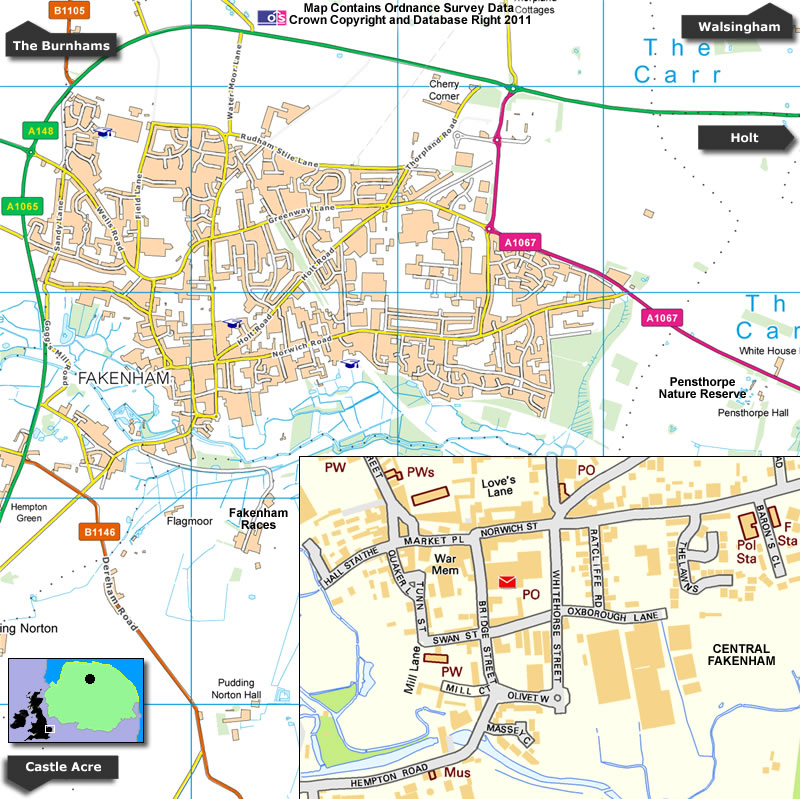
|
|
| |
|
Fakenham Guided Picture Tour
|
We start our tour of Fakenham in the centre of this market town. The market place has always been a significant part of Fakenham and has existed from as early as 1250. During the 19th century the main function of the market was trading in agricultural products from the surrounding areas and in 1837 a separate cattle and pig market was established. Although livestock is no longer sold, a weekly market is held on a Thursday when local traders set up their stalls. Also a farmer’s market takes place once a month (4th Saturday) with stalls selling fresh fruit and vegetables. |
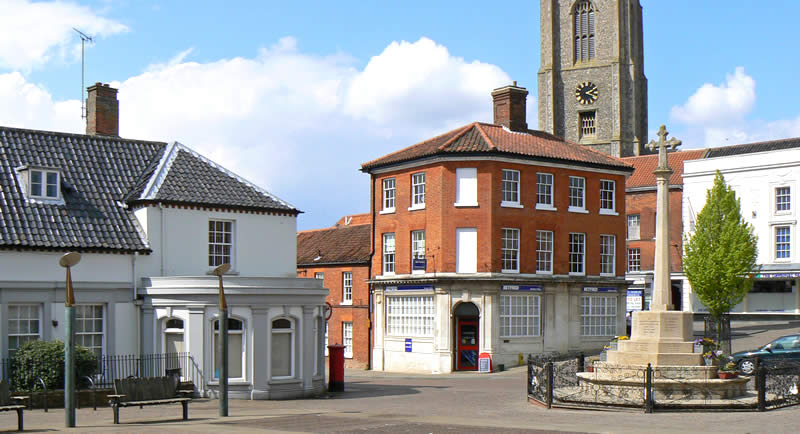
The view across the market place and war memorial towards the church |
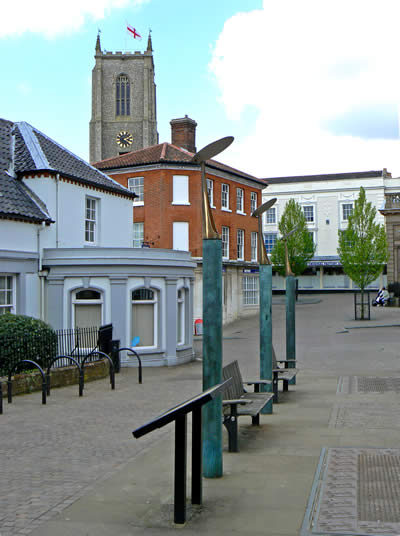
Fakenham Market Place |
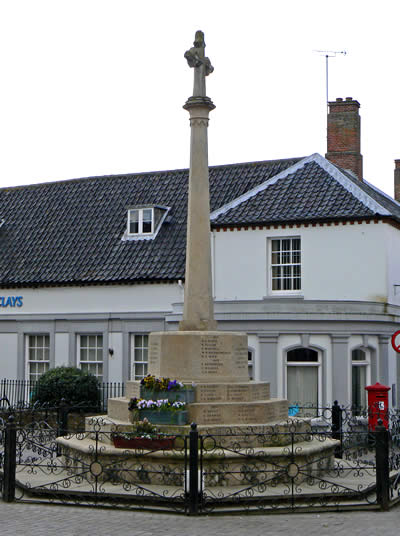
The War Memorial |
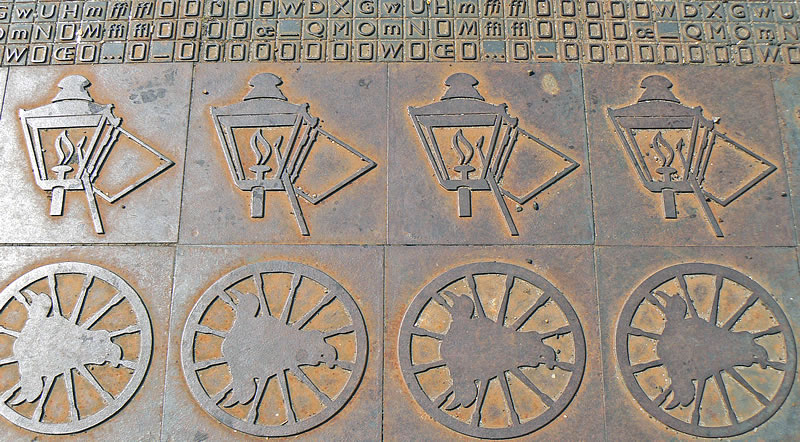
The floor of the market place has tiles showing past trades of the town - including printing, gas and livestock |
Thanks to investment, Fakenham town centre has been renovated and pedestrianised, with shops and places for refreshment. One interesting building is the original drapery shop established by William James Aldiss in 1892. The company has grown by generations of the Aldiss family to become one of Norfolk's biggest home furnishing companies, selling fashion, drapery, carpets, furniture, homewares and various household accessories (the current modern store is now on the outskirts of the town) |
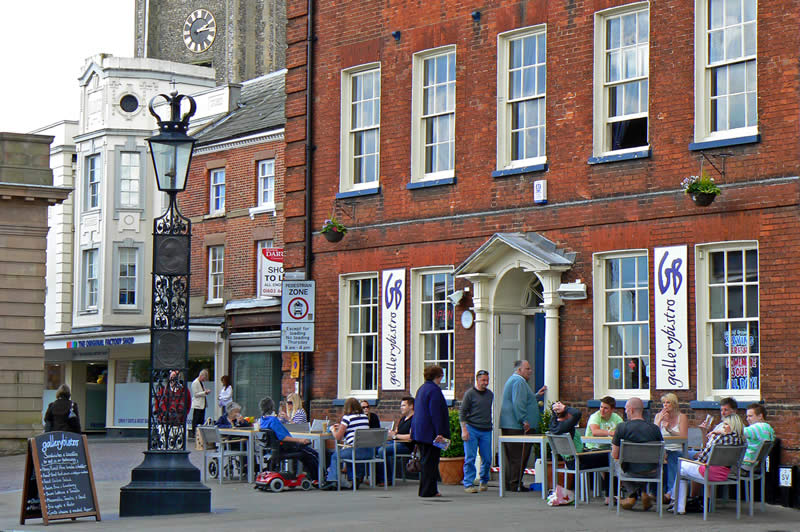
Gallery Bistro in the centre of Fakenham |
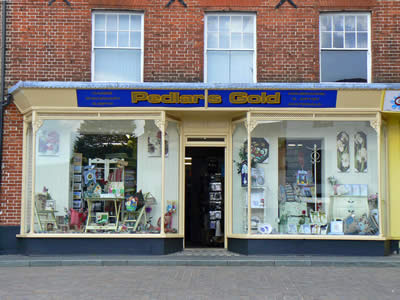
Pedlars Gold Shop in Fakenham |
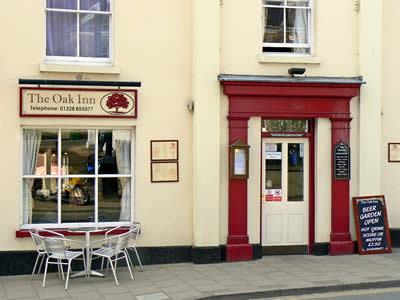
Fakenham Cafe |
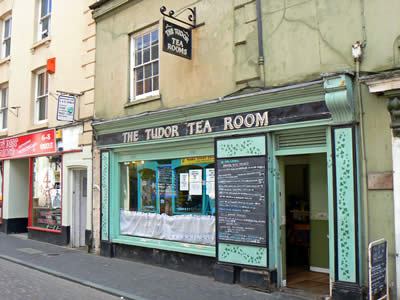
The Tudor Tea Room |
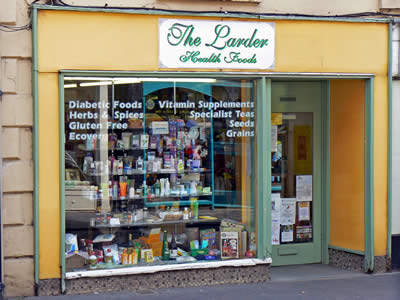
Health Food Shop |
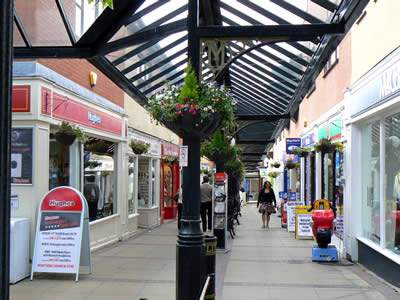
Shopping Arcade |
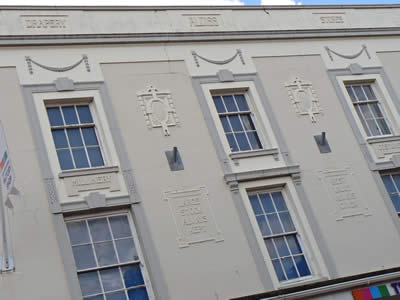
The drapery store established by William James Aldiss |
Fakenham Town Sign reminds us of its printing history, showing a man operating a printing press. Printing was the major industry in the 19th and 20th centuries, but the major printworks (Cox and Wyman) closed in the 1970s. Nevertheless, there are still more than 10 small printing firms in industrial premises around and near the town. |
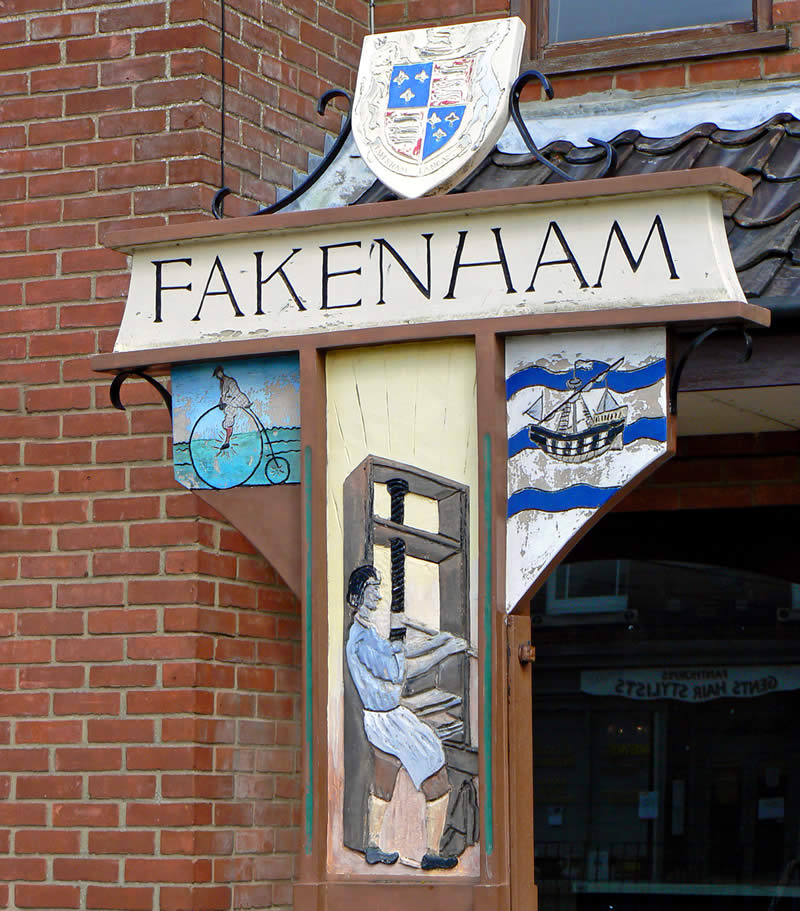
Fakenham Town Sign, showing a printing press |
The tower of Fakenham parish church dominates the skyline of the town. Most of the building dates back to the 14th century, although some parts are thought to be from the earlier Saxon period. The tower was added during the 15th century and then followed a decline, lasting hundreds of years, when the church fell into disrepair. It was not until the Victorian era that a major restoration project brought the church back to its full glory. A few bombs during WW2 narrowly missed the church, but thankfully it is still standing tall over Fakenham and will continue to do so for another millennium. |
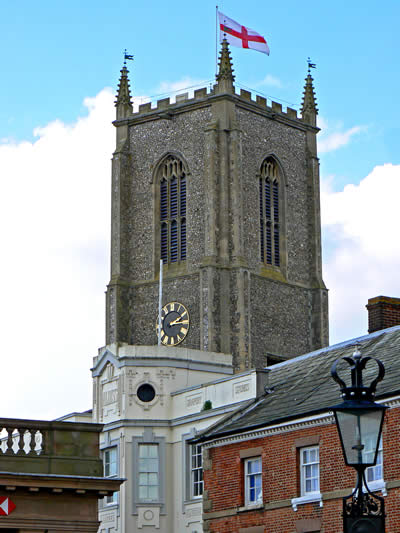
Fakenham Church Tower |
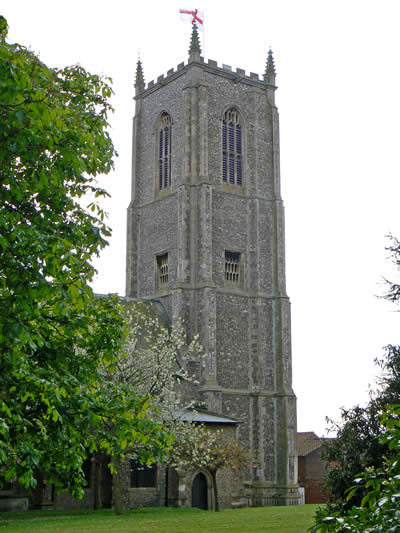
Standing at 115 feet high, with 146 steps to the top! |
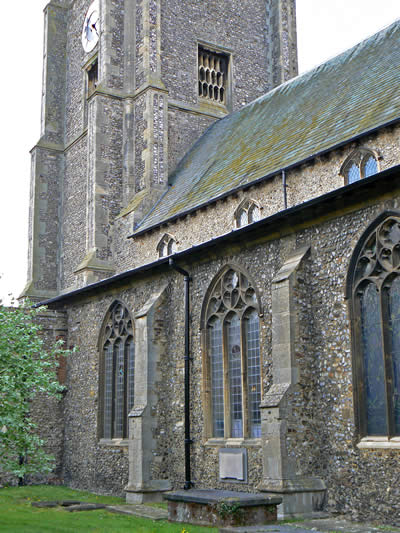
Fakenham Parish Church of S Peter & St Paul |
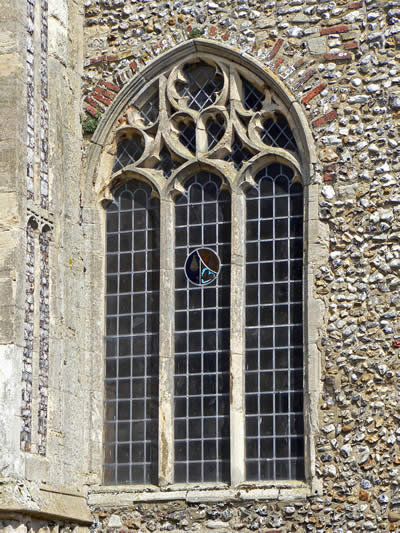
Flint walls and an old window! |
Fakenham Museum of Gas and Local History is the only surviving town gasworks in England and Wales, complete with all equipment used for the manufacture of gas from coal: retorts, condenser, purifiers, meter, gasholder. The museum is housed in the town’s former gasworks, which ceased production of gas from the heating of coal in 1965 following the discovery of Natural Gas in the North Sea. The gas works is a Scheduled Ancient Monument, a prestigious and rare distinction for an industrial site and, as such, is a National Treasure, providing an insight into our cultural, social and industrial heritage with displays of lighting, heating, cooking and domestic equipment. |
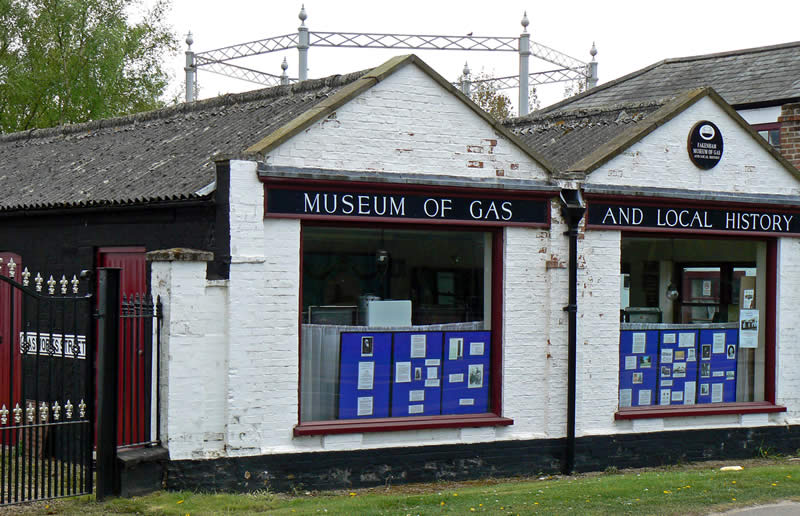
The Museum of Gas and Local History in Fakenham |
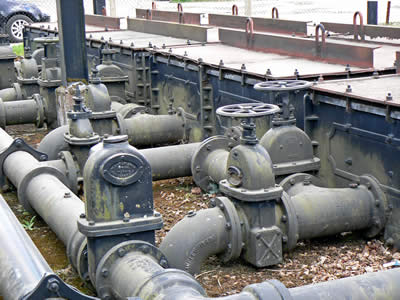
Close up of all the pipes in the yard |
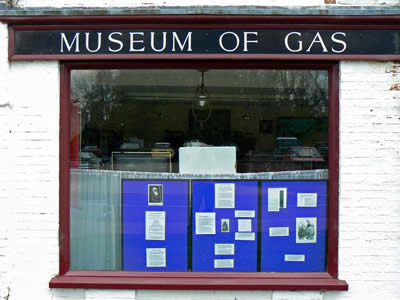
Fakenham Museum of Gas |
The River Wensum flows through the middle of Fakenham and at one stage three water mills were located near the town - Fakenham Mill, Sculthorpe Mill and Hempton Mill - with all three mills working together, moving water downstream between them. |
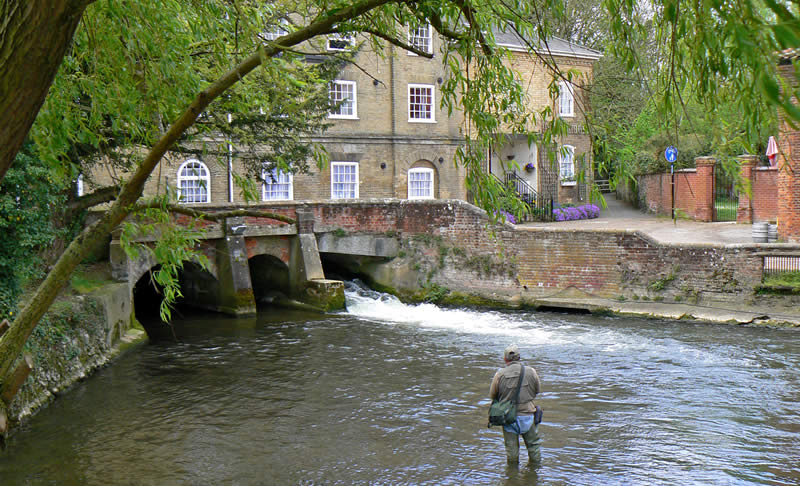
Fishing in the River Wensum near Fakenham Mill |
Fakenham summary of what to SEE and DO
|
 Visit the market and marketplace on a Thursday |
 Explore the town centre |
 Investigate the historic parish church |
 Visit the Museum of Gas and Local History |
 Enjoy the excitement of a horse race at Fakenham Racecouse |
 Explore Pensthorpe Nature Reserve, where BBC Springwatch is filmed |
|
|
Our Verdict
|
Fakenham has plenty of facilities on offer in its historic town centre. It is also a good location from which you can explore the rest of North Norfolk. |
|
|
FAKENAHM TOUR INDEX |
|
|
|
|
|
|
|
|
NEARBY PICTURE TOURS |
|
|
|
|
|
|
|
|
TOURIST ATTRACTIONS |
 |
|
|
|
|
|
|
|
MORE OF OUR WEBSITES |
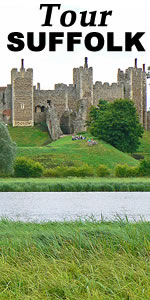 |
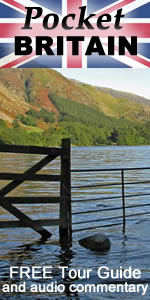 |
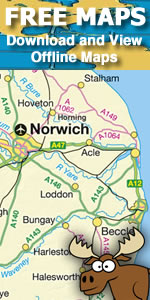 |
| |
|

